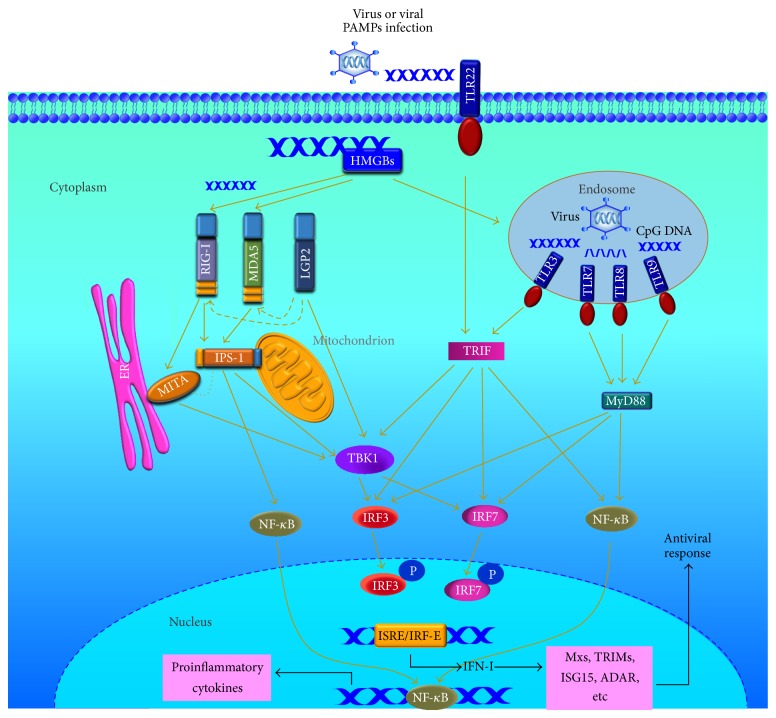Figure 2.
Schematic overview of intracellular antiviral immune signaling in teleosts. Fishes have conserved intercellular PRRs to sense virus or viral PAMPs. TLR3 and TLR22 sense dsRNA and transmit signals to the downstream adaptor IRIF; endosome localized TLR7/8 and TLR9 recognize ssRNA and CpG DNA, respectively, and then deliver signal to MyD88. Like mammalian RLRs, RIG-I and MDA5 recognize dsRNA or ssRNA in different length and activate mitochondrion IPS-1. With no CARD domain, LGP2 is thought to fail to interact with IPS-1 but can transmit signal to TBK1. Studies also indicate that LGP2 can mediate signals of RIG-I and MDA5. Fish MITA localizes in ER, but it is in close vicinity with IPS-1 in mitochondrial-ER contact regions. MITA participates in antiviral activation of IFN or ISGs downstream of RIG-I and MDA5 through MITA-TBK1-IRF3 pathway. TRIF and IPS-1 transfer signal through NF-κB and TBK1-IRF3/7-IFN-I pathway. MyD88 signal activates IRF3/7 and NF-κB, not TBK1. Upon phosphorylation, IRF3 and IRF7 transmit to nucleus and induce the production of IFN-I which induces antiviral immune response along with the activated ISGs. The activated NF-κB also transmits to nucleus initiating the activation of proinflammatory cytokines. Cytoplasmic HMGBs can promiscuously sense immunogenic nucleic acid and delivery to the discriminative sensors: TLRs and RLRs.

